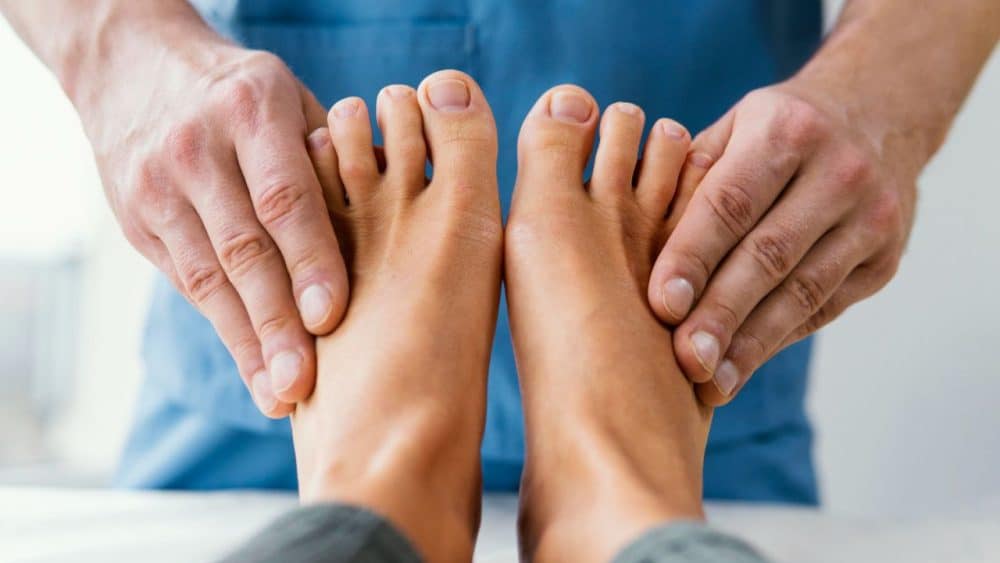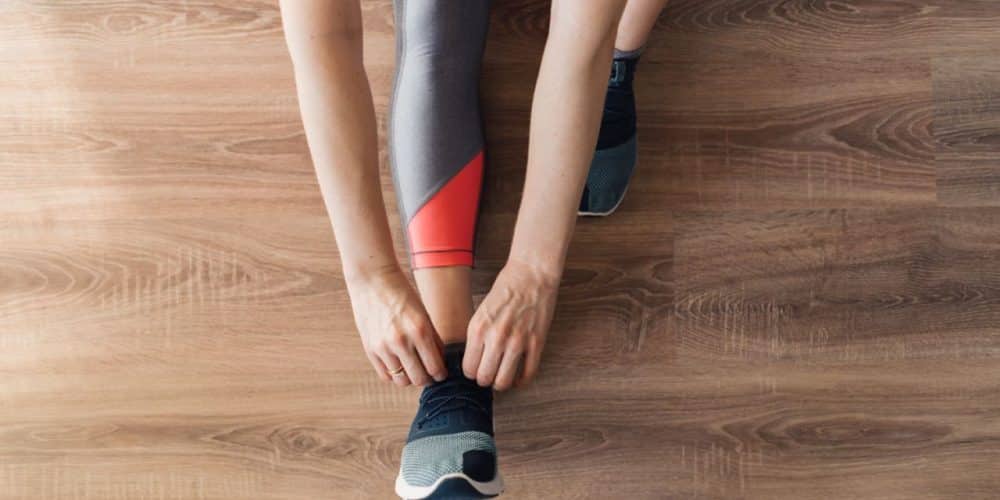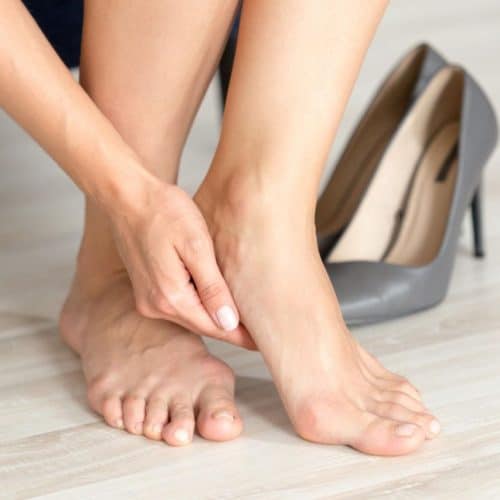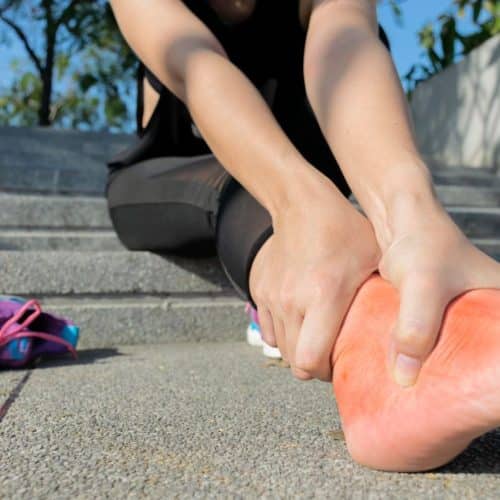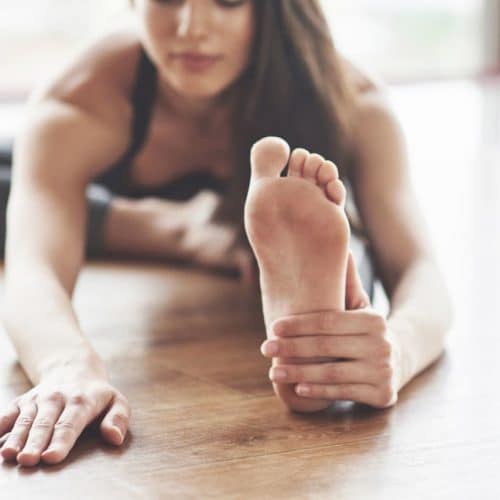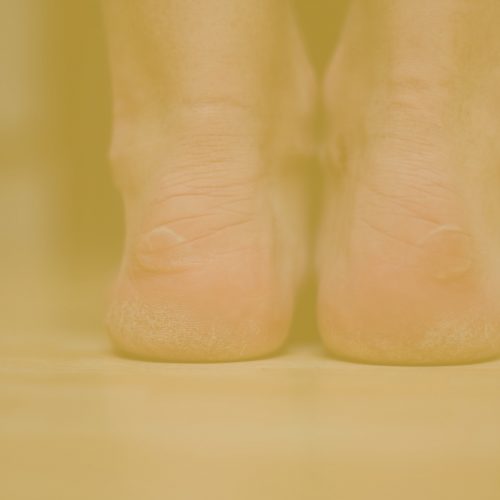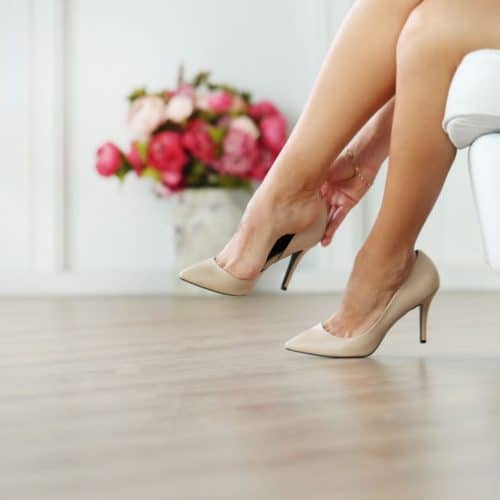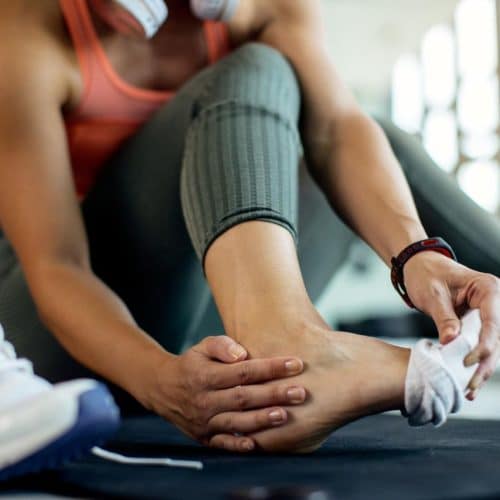Have you ever wondered how some people effortlessly maintain their active lifestyle while others struggle with foot pain? The answer might lie in foot orthotics. These unassuming, custom-made shoe inserts can work wonders in supporting and relieving those suffering from various foot conditions. In this article, we will explore the world of foot orthotics, shedding light on their benefits, types, and how they can improve your overall foot health.
What Are Foot Orthotics?
Foot orthotics, or shoe inserts or orthotic insoles, are devices designed to support and align the feet properly. They are placed inside shoes to provide cushioning, stability, and correction for irregular foot mechanics. Orthotics are available in various shapes, sizes, and materials, making them adaptable to different foot conditions.
Types of Foot Orthotics
1. Rigid Orthotics
Rigid orthotics are constructed from stiff materials such as plastic or carbon fibre. They primarily control foot movement in individuals with excessive pronation or supination.
2. Soft Orthotics
Soft orthotics are made from cushioned materials and are ideal for people with diabetic foot ulcers, arthritis, or sensitive feet. They provide extra shock absorption and alleviate pressure on vulnerable areas.
3. Semi-Rigid Orthotics
Semi-rigid orthotics combine elements of both rigid and soft orthotics. They offer support and cushioning while controlling foot movement for conditions like flat feet or plantar fasciitis.
4. Custom-Made Orthotics
Custom-made orthotics are tailored to meet an individual’s specific foot shape and needs. They are typically prescribed for severe foot conditions that over-the-counter options cannot adequately address.
Common Foot Problems Addressed by Orthotics
Foot orthotics are highly effective in addressing many common foot problems. These specialised shoe inserts can provide much-needed support, alignment, and relief from various discomforts. Here, we delve deeper into some prevalent foot issues that orthotics can help alleviate:
1. Plantar Fasciitis
Plantar fasciitis is one of the most common causes of heel pain, characterised by inflammation of the plantar fascia, a thick band of tissue that runs along the bottom of the foot, connecting the heel bone to the toes. This condition often results from repetitive strain or overuse, leading to micro-tears in the fascia. Orthotics for plantar fasciitis offer essential arch support and proper cushioning to reduce tension on the plantar fascia, providing relief and facilitating the healing process.
2. Flat Feet
Flat feet, also known as fallen arches, occur when the arches of the feet collapse, causing the entire sole to make contact with the ground. This condition can lead to overpronation, where the foot rolls too far inward with each step. Orthotics for flat feet are designed to provide the necessary arch support, distributing weight evenly across the foot and improving overall foot alignment.
3. Bunions
Bunions are bony bumps that develop at the base of the big toe, often resulting from the misalignment of the joint. These painful protrusions can make walking or wearing shoes uncomfortable. Orthotics can help alleviate pressure on the bunion and surrounding areas, reducing friction and slowing the condition’s progression.
4. Morton’s Neuroma
Morton’s neuroma is a nerve condition that causes pain, tingling, or numbness in the toes, most commonly between the third and fourth toes. This condition often arises due to nerve compression between the metatarsal bones. Orthotics can create extra space in the toe box, easing the pressure on the affected nerve and relieving discomfort.
5. Achilles Tendonitis
Achilles tendonitis is an Achilles tendon inflammation that connects the calf muscles to the heel bone. Overuse, tight calf muscles, or inadequate footwear can cause this condition. Orthotics designed to provide cushioning and support to the heel and ankle can help reduce strain on the Achilles tendon and facilitate healing.
6. Overpronation and Supination
Overpronation and supination are gait abnormalities involving an excessive inward or outward rolling of the foot during walking or running. These irregular movements can lead to various foot and lower limb issues. Orthotics with specific corrective features can help stabilise the foot and ankle, promoting a more balanced gait and preventing further complications.
7. Metatarsalgia
Metatarsalgia is characterised by pain and inflammation in the foot ball, often caused by excessive pressure on the metatarsal bones. Orthotics with added metatarsal pads or cushions can redistribute pressure away from the affected area, providing relief and allowing for proper healing.
8. High Arches
High arches, also known as cavus feet, occur when the arches of the feet are unusually raised. This can result in poor shock absorption and excessive pressure on certain foot areas. Orthotics with adequate arch support can help alleviate discomfort and reduce the risk of injuries associated with high arches.
By addressing these common foot problems, orthotics can significantly improve an individual’s mobility, comfort, and quality of life. However, consulting with a qualified healthcare practitioner or podiatrist is essential to ensure proper diagnosis and the appropriate choice of orthotics for your specific foot condition.
How Foot Orthotics Work
Foot orthotics are ingeniously designed to address various foot issues and promote better overall foot health. These custom or over-the-counter inserts work in several ways to provide support, alignment, and relief from discomfort. Understanding how foot orthotics work can shed light on their effectiveness and how they can significantly improve foot function. Here’s a detailed look at the mechanisms behind foot orthotics:
1. Proper Alignment
One of the primary functions of foot orthotics is to ensure proper alignment of the foot and lower limb. By supporting the arches and promoting optimal positioning of the feet, orthotics help distribute weight more evenly across the foot surface. This proper alignment reduces stress on specific areas, such as the heels, balls of the feet, and toes, preventing excessive pressure that can lead to pain and discomfort.
2. Pressure Distribution
Orthotics are engineered to distribute pressure evenly throughout the foot. Doing so prevents any area from bearing excessive weight during weight-bearing activities like walking or running. Evenly distributed pressure reduces the risk of developing pressure points, blisters, and calluses, enhancing overall foot comfort and health.
3. Shock Absorption
Our feet endure significant impacts with every step during everyday activities and physical exercises. Foot orthotics have various cushioning technologies that absorb and dissipate these shock forces. By reducing the impact on the feet and lower limbs, orthotics help prevent injuries and protect joints from undue stress.
4. Stability and Support
Foot orthotics offer stability and support to the feet and ankles. This support is especially crucial for individuals with weak or injured ankles, as it helps maintain proper alignment and prevents excessive rolling of the feet. By stabilising the foot, orthotics reduce the risk of sprains and twists, making them invaluable tools for athletes and those with physically demanding lifestyles.
5. Biomechanical Corrections
Different types of foot orthotics are designed to address specific biomechanical issues. For example, orthotics for overpronation may include arch support and medial wedges to correct inward rolling of the feet. On the other hand, orthotics for supination include lateral wedges to help stabilise the outward rolling of the feet. These specialised corrections improve overall gait mechanics and alleviate strain on the feet and lower limbs.
6. Offloading Pressure
In conditions such as plantar fasciitis, where specific foot areas are susceptible to excessive pressure, orthotics can be designed to offload these areas. For instance, orthotics for plantar fasciitis may have targeted padding or cutouts around the affected region, reducing direct pressure and allowing for better healing.
7. Accommodating Deformities
For individuals with foot deformities like bunions or hammertoes, orthotics can accommodate these irregularities by providing extra space and cushioning. This accommodation prevents painful rubbing and friction, offering relief and preventing further aggravation of the deformity.
8. Customisation for Individual Needs
One of the most significant advantages of custom-made orthotics is the ability to cater to an individual’s unique foot structure and needs. A podiatrist or orthopedic specialist can tailor orthotics to fit your feet precisely, considering factors such as arch height, foot length, and any existing foot conditions. This customisation ensures that the orthotics provide the most effective support and relief possible.
The Benefits of Using Foot Orthotics
Foot orthotics offer many advantages to individuals struggling with various foot issues and those seeking improved overall foot health. These specialised inserts, whether custom-made or over-the-counter, can significantly enhance comfort and mobility. Let’s explore the key benefits of using foot orthotics in a concise bullet-point format:
- Pain Relief: Foot orthotics provide targeted support and cushioning, reducing pain and discomfort associated with conditions like plantar fasciitis, flat feet, and bunions.
- Improved Posture: By promoting proper foot alignment, orthotics contribute to better overall posture, alleviating back, hip, and knee pain.
- Enhanced Athletic Performance: Athletes can benefit from orthotics as they optimise foot mechanics, leading to improved performance, reduced fatigue, and lower risk of injuries.
- Delaying Surgery: In some cases, using orthotics may delay surgical interventions, providing a conservative and effective treatment option.
- Reducing the Risk of Injuries: Orthotics can prevent overuse injuries by stabilising the feet and correcting biomechanical imbalances.
- Personalised Support: Custom-made orthotics are tailored to an individual’s unique foot structure, ensuring the most effective support and relief.
- Preventing Foot Deformities: Orthotics can alleviate pressure on vulnerable areas, reducing the risk of exacerbating conditions like bunions and hammertoes.
- Easing Joint Strain: Proper alignment provided by orthotics reduces stress on joints, such as ankles, knees, and hips, promoting better joint health.
- Alleviating Diabetic Foot Complications: For individuals with diabetes, orthotics can provide vital support and cushioning, reducing the risk of foot ulcers and complications.
- Enhancing Daily Comfort: Whether standing for long hours or engaging in physical activities, orthotics offer increased comfort and reduced fatigue.
- Improving Walking and Running Mechanics: Orthotics can correct gait abnormalities, leading to a smoother and more efficient stride.
- Better Shock Absorption: With specialised cushioning, orthotics absorb shock during walking or running, protecting the feet and lower limbs from impact-related injuries.
- Versatility: Orthotics can fit into various types of shoes, from athletic sneakers to dress shoes, making them suitable for everyday wear.
- Conservative Treatment Option: Foot orthotics provide a non-invasive and non-pharmaceutical approach to managing foot issues and discomfort.
- Long-Term Foot Health: By addressing foot problems and promoting better foot mechanics, orthotics contribute to long-term foot health and overall well-being.
Foot orthotics can make a substantial difference in an individual’s quality of life, helping them overcome pain, enhance performance, and prevent further foot complications. However, consulting with a podiatrist is essential to determine the most suitable type of orthotics for specific foot conditions.
With the right guidance and the appropriate use of foot orthotics, individuals can experience a significant improvement in their foot health and overall comfort.
Getting Fitted for Foot Orthotics
Getting properly fitted for foot orthotics is crucial in ensuring that these specialised shoe inserts provide the best support and relief for your specific foot condition. Professional assessment and customisation play a vital role in optimising the effectiveness of orthotics. Here’s a detailed explanation of the process involved in getting fitted for foot orthotics:
- Professional Assessment: The first step in getting fitted for foot orthotics involves consulting a qualified podiatrist. During this assessment, the podiatrist will examine your feet, observe your gait, and discuss any foot issues or discomfort you may be experiencing. This evaluation is essential to determine the most appropriate type of orthotics for your specific needs.
- Biomechanical Analysis: In some cases, a biomechanical analysis may be conducted to understand how your feet function during walking or running. This analysis may involve observing your gait on a treadmill or using specialised technology to assess foot movement and pressure distribution. The information gathered from this analysis helps identify any biomechanical issues that orthotics need to address.
- Customisation (If Needed): The next step involves creating a personalised fit for individuals requiring custom-made orthotics. Custom orthotics are moulded or digitally scanned to match the precise contours of your feet. The podiatrist will take impressions of your feet to ensure the orthotics fit snugly and address your unique foot structure and needs.
- Trying Out Different Options: Individuals may try different off-the-shelf orthotics before opting for custom-made ones. This allows for comparing various options to find the most suitable fit and support.
- Fitting and Adjustment: Once the orthotics are ready, the podiatrist will ensure they fit correctly in your shoes. Proper fitting is crucial to ensuring the orthotics stay securely in place and provide the intended support. If necessary, the podiatrist will make any adjustments to achieve the optimal fit.
- Instruction and Education: During the fitting process, the podiatrist will provide instructions on how to wear and care for the orthotics. It’s essential to follow these guidelines to maximise the effectiveness and lifespan of the orthotics.
- Regular Check-ups: You must schedule regular check-ups with your podiatrist after using foot orthotics. Regular follow-ups allow the podiatrist to assess the orthotics’ performance, make any necessary adjustments, and ensure that they continue to meet your specific foot health needs.
Remember, the fitting process for foot orthotics is a collaborative effort between you and your podiatrist. Open communication about your foot issues, lifestyle, and expectations is vital to ensure that the orthotics are tailored to your unique needs.
The goal is to provide you with the most effective support and relief, enhancing your comfort and mobility while promoting better foot health. With the right fit and professional guidance, foot orthotics can become valuable allies in managing foot problems and maintaining overall well-being.
Caring for Foot Orthotics
Proper care and maintenance of foot orthotics are essential to ensure their longevity and continued effectiveness in providing support and relief. With regular care, you can maximise the lifespan of your orthotics and keep them functioning optimally. Here are some important tips on how to care for your foot orthotics:
1. Cleaning Instructions: Keep Them Fresh and Hygienic
Regularly clean your foot orthotics to prevent dirt, sweat, and bacteria buildup. Follow the manufacturer’s guidelines for cleaning, which typically involve hand washing with mild soap and water. Avoid using harsh chemicals or soaking the orthotics, as this can damage the materials.
2. Drying Properly: Avoid Moisture-related Issues
After cleaning, allow the orthotics to air dry thoroughly before placing them back in your shoes. Avoid exposing them to direct sunlight or high heat, as excessive heat can cause warping or deformation.
3. Replacement Timeframe: Know When It’s Time for Renewal
Foot orthotics have a finite lifespan, and their effectiveness can diminish. Pay attention to signs of wear, such as flattened cushioning or visible cracks in the material. As a general rule, consider replacing your orthotics every 1 to 2 years or as your podiatrist recommends.
4. Storing Properly: Protect Them from Damage
Store your foot orthotics in a cool, dry place away from direct sunlight when not in use. Consider using a protective case or pouch to prevent damage and keep them clean.
5. Avoiding Excessive Moisture: Prevent Water-related Problems
While orthotics are designed to withstand normal levels of moisture from sweat, excessive exposure to water can damage them. If your orthotics get wet, remove them from your shoes and let them air dry completely before using them again.
6. Avoiding Extreme Temperatures: Protect Them from Heat and Cold
Avoid exposing your orthotics to extreme temperatures, such as leaving them in a hot car or near a heater. High heat can cause the materials to warp or lose their supportive properties.
7. Regular Check-ups: Stay Proactive with Professional Guidance
Schedule regular check-ups with your podiatrist or healthcare practitioner to assess the condition of your orthotics. They can make any necessary adjustments or recommend replacements if needed.
8. Replacing Worn-out Orthotics: Prioritise Your Comfort and Health
If your foot orthotics show signs of wear, such as flattened cushioning or reduced support, it’s time to replace them. Continuing to use worn-out orthotics may lead to inadequate support and potential discomfort.
9. Avoiding Exposure to Harsh Chemicals: Preserve Their Integrity
Avoid exposing your orthotics to harsh chemicals or solvents, as they can degrade the materials and compromise their functionality.
10. Using Orthotics for Their Intended Purpose: Enhance Their Efficiency
Ensure you use your orthotics only for their intended purpose, which is to provide support and relief for your specific foot condition. Using them for activities or sports, they are not designed for may lead to premature wear and reduced effectiveness.
Debunking Common Myths About Foot Orthotics
Despite the numerous benefits of foot orthotics, several myths and misconceptions surround their use. Let’s address and debunk some of the most common myths to provide a clearer understanding of these valuable foot aids:
1. Myth: Orthotics Are Only for Seniors
Debunked: Foot orthotics benefit people of all ages, not just seniors. They provide support, alleviate discomfort, and correct biomechanical issues for individuals of various age groups, including children, athletes, and adults with active lifestyles.
2. Myth: Orthotics Weaken the Feet
Debunked: On the contrary, orthotics can strengthen the feet by promoting proper alignment and reducing strain. By providing support and stability, orthotics can help the foot function optimally during daily activities and exercises.
3. Myth: Orthotics Are Uncomfortable
Debunked: Customised orthotics are designed to fit your feet comfortably. While there may be an adjustment period initially, with proper fitting and gradual usage, orthotics should not cause discomfort. Communicating with your podiatrist is essential if you experience any issues.
4. Myth: Orthotics Are a Quick Fix
Debunked: While orthotics can significantly relieve many foot issues, they are not a cure-all. They are part of a comprehensive treatment plan and work best when combined with exercises, stretching, and other lifestyle adjustments.
5. Myth: Orthotics Are Only for Foot Pain
Debunked: Foot orthotics can benefit individuals with foot, ankle, and lower limb issues beyond just foot pain. They can address problems like overpronation, plantar fasciitis, Achilles tendonitis, and more, improving overall foot mechanics and function.
6. Myth: Orthotics Are One-Size-Fits-All
Debunked: While over-the-counter orthotics are available, custom-made orthotics offer personalised support tailored to your specific foot structure and needs. Custom orthotics ensure optimal fit and effectiveness for your condition.
7. Myth: Orthotics Are Expensive
Debunked: While custom orthotics may have a higher initial cost, they are a valuable investment in foot health. Considering the relief they provide and the potential prevention of further foot issues, their benefits outweigh the cost in the long run.
8. Myth: Orthotics Can Replace Proper Footwear
Debunked: Orthotics use appropriate footwear to provide the best support and relief. They are not a substitute for well-fitting, supportive shoes but rather complement them to enhance overall foot function.
9. Myth: Orthotics Are Only for Athletes
Debunked: While athletes can benefit from orthotics to improve performance and prevent injuries, they are not exclusive to sports-related activities. Orthotics offer advantages to individuals with various lifestyles and activity levels.
10. Myth: Once You Start Using Orthotics, You Can’t Stop
Debunked: While some individuals may benefit from long-term orthotic use, it’s not always a permanent requirement. Depending on your foot condition and progress, your podiatrist may adjust your treatment plan and suggest discontinuing orthotics when appropriate.
Conclusion
In conclusion, foot orthotics can be a game-changer for individuals seeking relief from various foot-related issues. Whether you’re an athlete looking to enhance performance or someone dealing with chronic foot pain, these custom-made shoe inserts offer many benefits. Foot orthotics can alleviate discomfort and improve overall foot function by providing proper support, alignment, and cushioning.
Through this blog, we have explored the different types of foot orthotics available, the conditions they can address, and how they are made to suit individual needs. Understanding the importance of seeking professional advice from a podiatrist or orthopedic specialist is crucial to ensuring you get the right orthotics for your specific condition.
Are you ready to take the first step towards better foot health and enhanced comfort? Share your experience or concerns related to foot issues in the comments below, and let’s discuss how foot orthotics can make a difference in your life!
Remember, caring for your feet is essential for overall well-being, so don’t hesitate to seek expert guidance and invest in quality foot orthotics. Finding the right foot orthotics can significantly improve your daily life, whether you’re active or spend long hours on your feet.
Take charge of your foot health today and journey towards pain-free, supported, and happy feet!
Content Summary
- In a nutshell, foot orthotics are specialised devices designed to align, support, and improve the function of your feet.
- From providing arch support and correcting irregular foot mechanics to reducing pain and preventing injuries, foot orthotics can cater to a wide range of needs.
- Various types are available, including over-the-counter inserts and custom-made orthotics tailored to your unique foot structure and condition.
- Foot orthotics, or shoe inserts or orthotic insoles, are devices designed to support and align the feet properly.
- Custom-made orthotics are tailored to meet an individual’s specific foot shape and needs.
- They are typically prescribed for severe foot conditions that over-the-counter options cannot adequately address.
- Foot orthotics are highly effective in addressing many common foot problems.
- These specialised shoe inserts can provide much-needed support, alignment, and relief from various discomforts.
- Plantar fasciitis is one of the most common causes of heel pain, characterised by inflammation of the plantar fascia, a thick band of tissue that runs along the bottom of the foot, connecting the heel bone to the toes.
- Orthotics for plantar fasciitis offer essential arch support and proper cushioning to reduce tension on the plantar fascia, providing relief and facilitating the healing process.
- Orthotics for flat feet are designed to provide the necessary arch support, distributing weight evenly across the foot and improving overall foot alignment.
- These irregular movements can lead to various foot and lower limb issues.
- Orthotics with specific corrective features can help stabilise the foot and ankle, promoting a more balanced gait and preventing further complications.
- Orthotics with adequate arch support can help alleviate discomfort and reduce the risk of injuries associated with high arches.
- By addressing these common foot problems, orthotics can significantly improve an individual’s mobility, comfort, and quality of life.
- However, consulting with a qualified healthcare practitioner or podiatrist is essential to ensure proper diagnosis and the appropriate choice of orthotics for your specific foot condition.
- Foot orthotics are ingeniously designed to address various foot issues and promote better overall foot health.
- Understanding how foot orthotics work can shed light on their effectiveness and how they can significantly improve foot function.
- One of the primary functions of foot orthotics is to ensure proper alignment of the foot and lower limb.
- Foot orthotics offer stability and support to the feet and ankles.
- Different types of foot orthotics are designed to address specific biomechanical issues.
- In conditions such as plantar fasciitis, where specific foot areas are susceptible to excessive pressure, orthotics can be designed to offload these areas.
- For individuals with foot deformities like bunions or hammertoes, orthotics can accommodate these irregularities by providing extra space and cushioning.
- One of the most significant advantages of custom-made orthotics is the ability to cater to an individual’s unique foot structure and needs.
- By promoting proper foot alignment, orthotics contribute to better overall posture, alleviating back, hip, and knee pain.
- Athletes can benefit from orthotics as they optimise foot mechanics, leading to improved performance, reduced fatigue, and lower risk of injuries.
- Sometimes, using orthotics may delay surgical interventions, providing a conservative and effective treatment option.
- Foot orthotics provide a non-invasive and non-pharmaceutical approach to managing foot issues and discomfort.
- By addressing foot problems and promoting better foot mechanics, orthotics contribute to long-term foot health and overall well-being.
- Foot orthotics can make a substantial difference in an individual’s quality of life, helping them overcome pain, enhance performance, and prevent further foot complications.
- The first step in getting fitted for foot orthotics involves consulting a qualified healthcare practitioner or podiatrist.
- This evaluation is essential to determine the most appropriate type of orthotics for your specific needs.
- The next step involves creating a personalised fit for individuals requiring custom-made orthotics.
- You must schedule regular check-ups with your podiatrist after using foot orthotics.
- Proper care and maintenance of foot orthotics are essential to ensure their longevity and continued effectiveness in providing support and relief.
- With regular care, you can maximise the lifespan of your orthotics and keep them functioning optimally.
- Consider using a protective case or pouch to prevent damage and keep them clean.
- If your foot orthotics show signs of wear, such as flattened cushioning or reduced support, it’s time to replace them.
- Continuing to use worn-out orthotics may lead to inadequate support and potential discomfort.
- Ensure you use your orthotics only for their intended purpose, which is to provide support and relief for your specific foot condition.
- Using them for activities or sports, they are not designed for may lead to premature wear and reduced effectiveness.
- Despite the numerous benefits of foot orthotics, several myths and misconceptions surround their use.
- Communicating with your podiatrist is essential if you experience any issues.
- While custom orthotics may have a higher initial cost, they are a valuable investment in foot health.
- Depending on your foot condition and progress, your podiatrist may adjust your treatment plan and suggest discontinuing orthotics when appropriate.
- In conclusion, Foot Orthotics can be a game-changer for individuals seeking relief from various foot-related issues.
- Whether you’re an athlete looking to enhance performance or someone dealing with chronic foot pain, these custom-made shoe inserts offer many benefits.
- Foot orthotics can alleviate discomfort and improve overall foot function by providing proper support, alignment, and cushioning.
- Through this blog, we have explored the different types of foot orthotics available, the conditions they can address, and how they are made to suit individual needs.
- Understanding the importance of seeking professional advice from a podiatrist or orthopedic specialist is crucial to ensuring you get the right orthotics for your specific condition.
- Share your experience or concerns related to foot issues in the comments below, and let’s discuss how foot orthotics can make a difference in your life!
- Remember, caring for your feet is essential for overall well-being, so don’t hesitate to seek expert guidance and invest in quality foot orthotics.
FAQs (Frequently Asked Questions)
1. Can foot orthotics be used for running?
Yes, foot orthotics can be used for running. They offer support and stability, which can improve running mechanics and reduce the risk of injuries.
2. How long does it take to get used to orthotics?
The adjustment period varies from person to person, but it typically takes a few weeks for the feet to adapt to the orthotics fully.
3. Can I wear foot orthotics in all types of shoes?
Most foot orthotics are designed to fit into various types of shoes, including athletic shoes, dress shoes, and some sandals.
4. Are foot orthotics waterproof?
Some orthotics are made from materials that repel water, but it’s essential to check the manufacturer’s specifications for the specific product.
5. Do foot orthotics correct foot deformities?
While orthotics can support and alleviate discomfort caused by certain foot deformities, they may not necessarily correct the deformity. Custom orthotics designed for your specific condition may be necessary for significant foot deformities.


